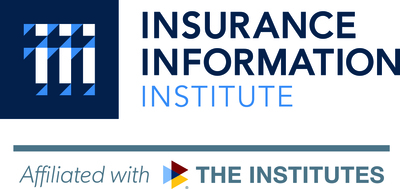|
12.05.2022 18:05:00
|
Expect Loss Pressures to Continue in the P&C Industry Due to Inflation, Supply Chain and Riskier Driving Behavior, New Triple-I/Milliman Report Shows
NEW YORK, May 12, 2022 /PRNewswire/ -- The property/casualty insurance industry saw the 2021 net combined ratio increase to 99.5, 0.8 points higher than 2020, driven by deterioration in the personal auto and, to a lesser extent, the workers compensation lines. Homeowners, Commercial Auto, Commercial Multi-Peril and General Liability were the product lines with significant improvement year-over-year. According to the latest underwriting projections by actuaries at the Insurance Information Institute (Triple-I) and Milliman, the 2022 net combined ratio is forecast to increase slightly to 99.6.
U.S. P&C industry performance continues to be constrained by historically high inflation impacting replacement costs.The quarterly report, Insurance Information Institute (Triple-I) /Milliman Insurance Economics and Underwriting Projections: A Forward View, was presented on May 12 at an exclusive members only virtual webinar.
Michel Léonard, PhD, CBE, Chief Economist and Data Scientist, and head of Triple-I's Economics and Analytics Department, discussed key macroeconomic trends impacting the property/casualty insurance industry results.
Léonard noted that the U.S. P&C industry's performance continues to be constrained by historically high inflation impacting replacement costs.
"The insurance industry's performance continues to be severely constrained by macroeconomic fundamentals. The average replacement costs for P&C lines is 16.3 percent, nearly twice the U.S. average CPI of 8.5 percent," he said, noting that while the Federal Reserve forecasts U.S. inflation to decelerate to 4.3 percent by year-end, "Triple-I expects the transition to take longer."
Dale Porfilio, FCAS, MAAA, Chief Insurance Officer, Triple-I, noted that 2021 had the worst full-year catastrophe losses since 2017 across all property/casualty product lines, though fourth quarter actuals were materially lower than prior expectation.
"Healthy premium growth observed in 2021 is likely to continue through 2024 due to the hard market," Porfilio said, adding, "the 2021 net expense ratio of 27.0 points was the lowest in more than a decade due to premiums growing at a faster rate than expenses." For the whole P&C insurance industry, he said to expect loss pressures to continue due to inflation and supply chain disruption.
On the personal auto side, the quarterly loss and loss adjustment expense ratios have deteriorated rapidly since the pandemic-induced low in Q2 2020 and are now well above the pre-pandemic experience in 2019. Porfilio said that the 2021 combined ratio jumped up to 101.4, the worst since 2017 and 8.9 points worse than 2020.
"While miles driven are largely back to 2019 levels, riskier driving behaviors have led to increased insured losses and fatality rates," Porfilio added.
On the commercial side, Jason B. Kurtz, FCAS, MAAA, a principal and consulting actuary at Milliman – an independent risk-management, benefits, and technology firm – said that the Commercial Multi-Peril (CMP) 2021 combined ratio improved 3.6 points from 2020, primarily due to strong net earned premium growth (6.3 percent year-over-year) from the economic recovery and a hard market.
"Despite the improvement relative to 2020, the CMP line still experienced an underwriting loss in 2021 and we expect underwriting results in 2022-2024 will continue to be adversely impacted by inflation and CAT loss pressures," Kurtz said.
Looking at the workers' compensation line, Kurtz noted that underwriting profits continue, although margins shrunk in 2021 and are expected to continue to shrink through 2024.
"The workers' comp line has experienced seven straight years of underwriting profitability, a remarkable turnaround after eight straight years of underwriting losses," he said. "Not surprisingly, rate increases have been hard to come by. Coupled with low unemployment, these forces will constrain premium growth for the foreseeable future."
On the commercial auto side, the 2021 combined ratio improved by 3.0 points from 2020 due to lower adverse development on prior accident years and a two-point reduction in expense ratio, according to Dave Moore, FCAS, MAAA of Moore Actuarial Consulting.
"The 2021 combined ratio dipped below 100% for the first time since 2010 and we've had the lowest expense ratio in more than a decade," Moore said. "Watch for social inflation loss pressure and prior year adverse loss development in 2022-2024."
About Insurance Information Institute (Triple-I)Founded in 1960, Triple-I provides objective, fact-based information about insurance while also being a trusted source of unique, data-driven insights which inform and empower consumers. Triple-I wants people to have the information they need to make educated decisions, manage risk, and appreciate the essential value of insurance. Triple-I has more than 60 insurance company members, including seven of the 10 largest writers of property/casualty insurance in the United States. The organization's focus is to create and to disseminate information; Triple-I neither lobbies on behalf of the insurance industry nor does it sell insurance. Triple-I is an affiliate of The Institutes.
About MillimanMilliman is among the world's largest providers of actuarial and related products and services. The firm has consulting practices in healthcare, property & casualty insurance, life insurance and financial services, and employee benefits. Founded in 1947, Milliman is an independent firm with offices in major cities around the globe. For further information visit Milliman.
![]() View original content to download multimedia:https://www.prnewswire.com/news-releases/expect-loss-pressures-to-continue-in-the-pc-industry-due-to-inflation-supply-chain-and-riskier-driving-behavior-new-triple-imilliman-report-shows-301546330.html
View original content to download multimedia:https://www.prnewswire.com/news-releases/expect-loss-pressures-to-continue-in-the-pc-industry-due-to-inflation-supply-chain-and-riskier-driving-behavior-new-triple-imilliman-report-shows-301546330.html
SOURCE Insurance Information Institute
 Der finanzen.at Ratgeber für Aktien!
Der finanzen.at Ratgeber für Aktien!
Wenn Sie mehr über das Thema Aktien erfahren wollen, finden Sie in unserem Ratgeber viele interessante Artikel dazu!
Jetzt informieren!
